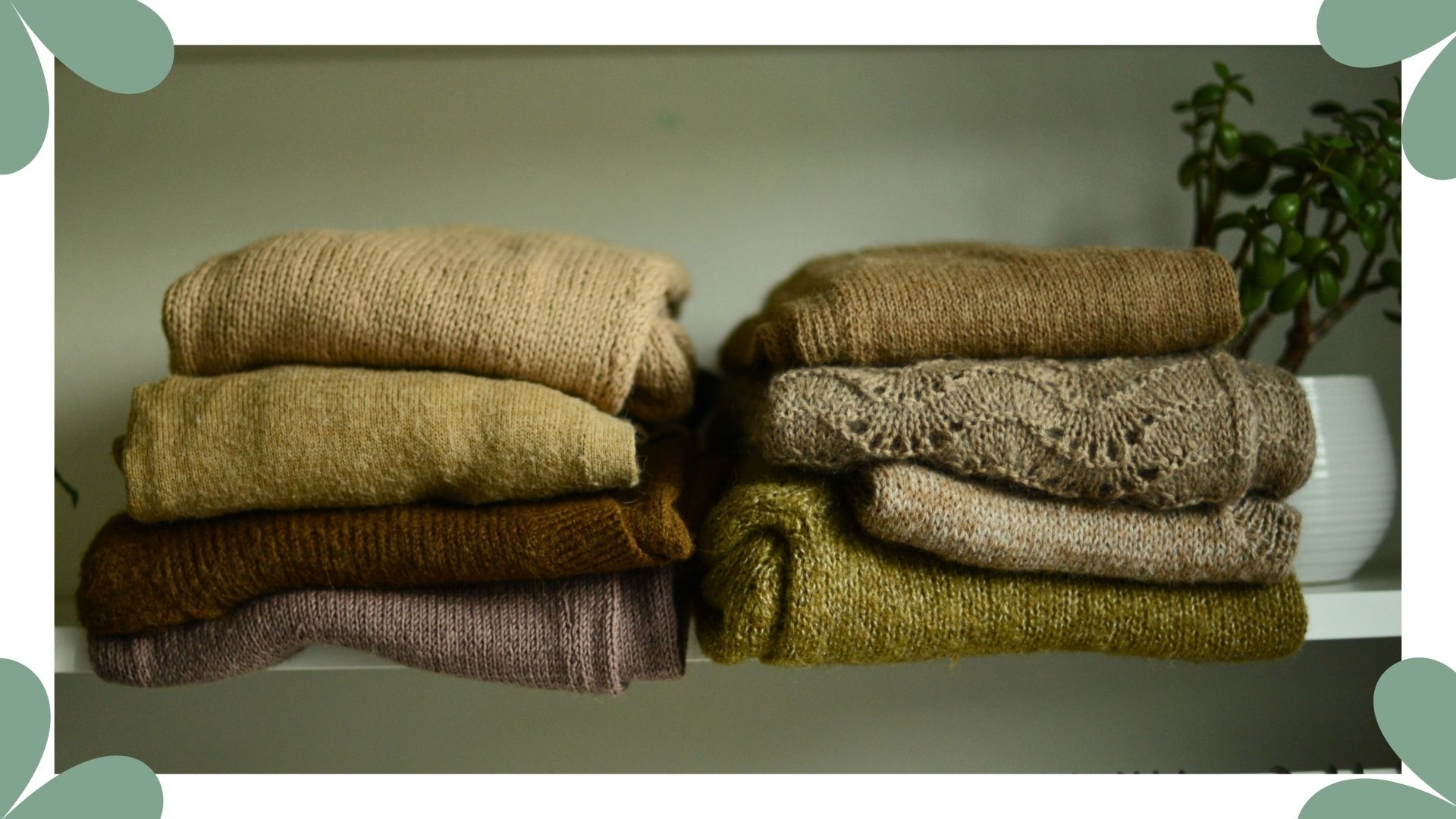
The best way to store jumpers isn't just about tidiness – it's about giving your beloved knits the care they deserve! These simple tricks will rescue your sweaters from drawer chaos and keep them safe from pesky moths.
Knowing the best way to store jumpers isn't just about staying organised – it's about making your favourite pieces last, especially when building your winter capsule wardrobe. Take your best cashmere jumper, for instance – with proper care, it could be warming you up for more than a decade.
The best way to store jumpers has a number of contributing factors and will largely depend on the level and type of storage you have, the number of jumpers you need to store and their type. To help you keep your knitwear in top condition, we've gathered some key insights from experts below.
The best way to store jumpers
The experts all agree on one thing - folding jumpers is the best way to store them.
“Use the KonMari method to fold allows you to see all the jumpers you have at a glance rather than continually using the top layer, “ says professional organiser and declutterer, Heather Tingle.
This clever folding technique does two things: it saves space and makes it super easy to spot your favourite jumpers. The secret is in the 'file fold' method, where your jumpers stand upright – think of it like books on a shelf.
You can use this method whether you're storing your knits in drawers or on shelves. And here's why it's better than hanging: jumpers are naturally stretchy, so when they're on hangers, their own weight pulls them down from the shoulders. Over time, this can leave them misshapen – something to definitely avoid!
The best way to fold jumpers
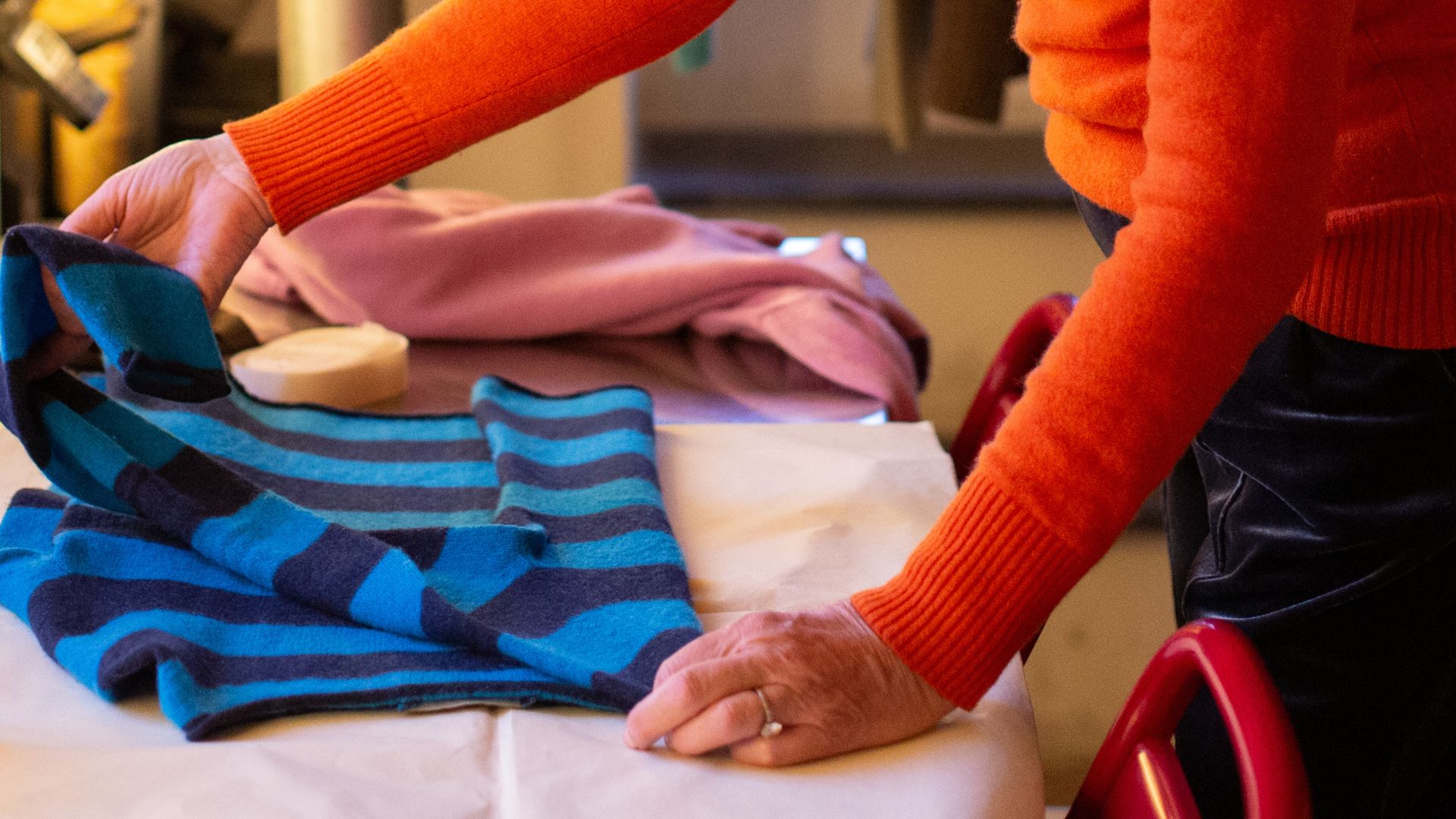
For your best wool jumpers to maintain their shape and avoid wrinkles or crushing, the KonMari file fold is the best method. While it might seem a bit different to how you’ve folded your jumpers previously, Heather says it really only takes three simple steps.
- Begin by folding the jumper into thirds to form a rectangle. As you fold each side in, make sure you fold the sleeve across and back on itself smoothly to ensure it stays within its third.
- Then, fold the rectangle in half by taking the top towards the bottom and leaving a small gap.
- Finally, fold it into thirds again (or just in half for bulkier jumpers).
“This technique allows jumpers to stand freely in the drawer and ensures that removing one jumper won't affect the rest,” she says.
1. Keep in drawers
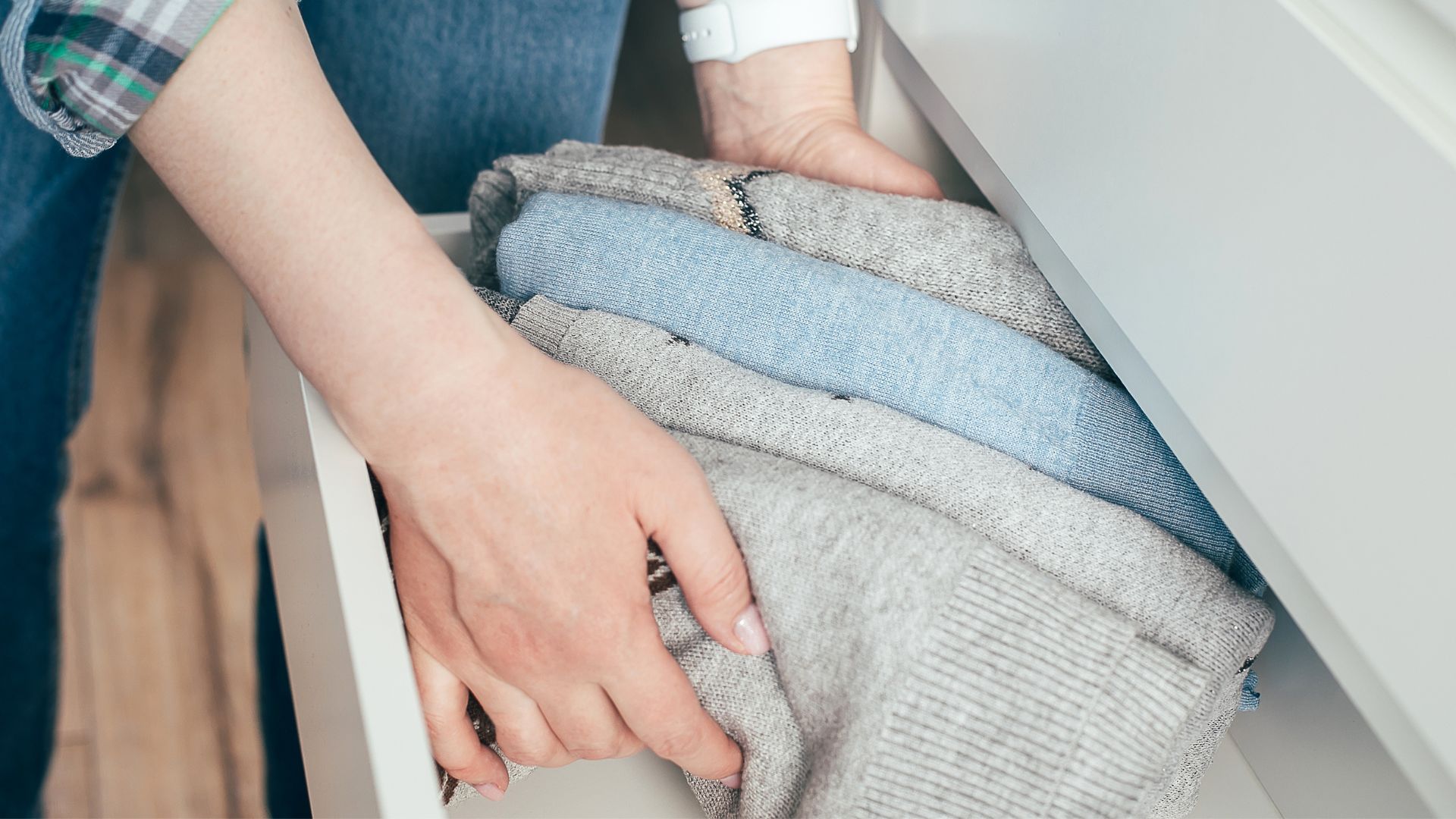
Storing jumpers in drawers keeps them safe from dust and sunlight – plus, it stops them getting snagged on other clothes.
With the right folding technique, drawer storage lets you see everything you own at a glance, so you can easily grab what you want to wear. Just keep in mind that chunky knits need deeper drawers, so check the space you have before you start organising.
Before storing, make sure your drawers are clean and dry – this will keep your knits in perfect condition.
"Consider putting a laundry tumble dryer sheet in the drawers to keep jumpers smelling fresh," suggests Heather.
RRP: £6.38 | Popping one of these tumble dryer sheets in the drawers with your jumpers can help keep them smelling fresh and fragrant. Just remember to replace them every few months when that lovely, fresh-laundry scent starts to fade.
RRP: £11.45 | Scented drawer liners are another great option for keeping your knits fresh – and if you choose lavender ones, they'll help keep moths away too.
RRP: £22.99 | If you've not quite got the hang of the Marie Kondo fold, these organisers are an easy way to recreate the same effect, keeping your drawers neat and your jumpers easily accessible.
2. Store on shelves

One of the benefits of shelving over drawers is that you can easily see all of your jumpers without having these hidden away or squashed into a drawer.
Not only does this mean you can see your jumpers at a glance, but you can also store more knitwear without them getting creased.
The one thing to consider is where your shelves are placed. It’s best to avoid storing jumpers in direct sunlight as this can lead to fading. For this reason, shelves set within a wardrobe is the best option. By having shelves in the wardrobe, you can also protect knitwear better from dust and moths as they are shut away.
RRP: £17.58 | Want perfectly folded jumpers every time? This clever Brabantia board has step-by-step instructions on both sides, making neat storage an absolute breeze.
RRP: £25.99 | If you don't want to use boxes but still want to organise your shelves, these transparent shelf dividers are perfect. Just pop them in place and they'll keep your jumpers neatly separated without disrupting your closet's clean look.
RRP: £15.99 | Want shelf-style storage but only have a rail? This clever hanging organiser has you covered. It creates perfect compartments for your knits, keeping everything visible and easy to grab.
3. Use boxes
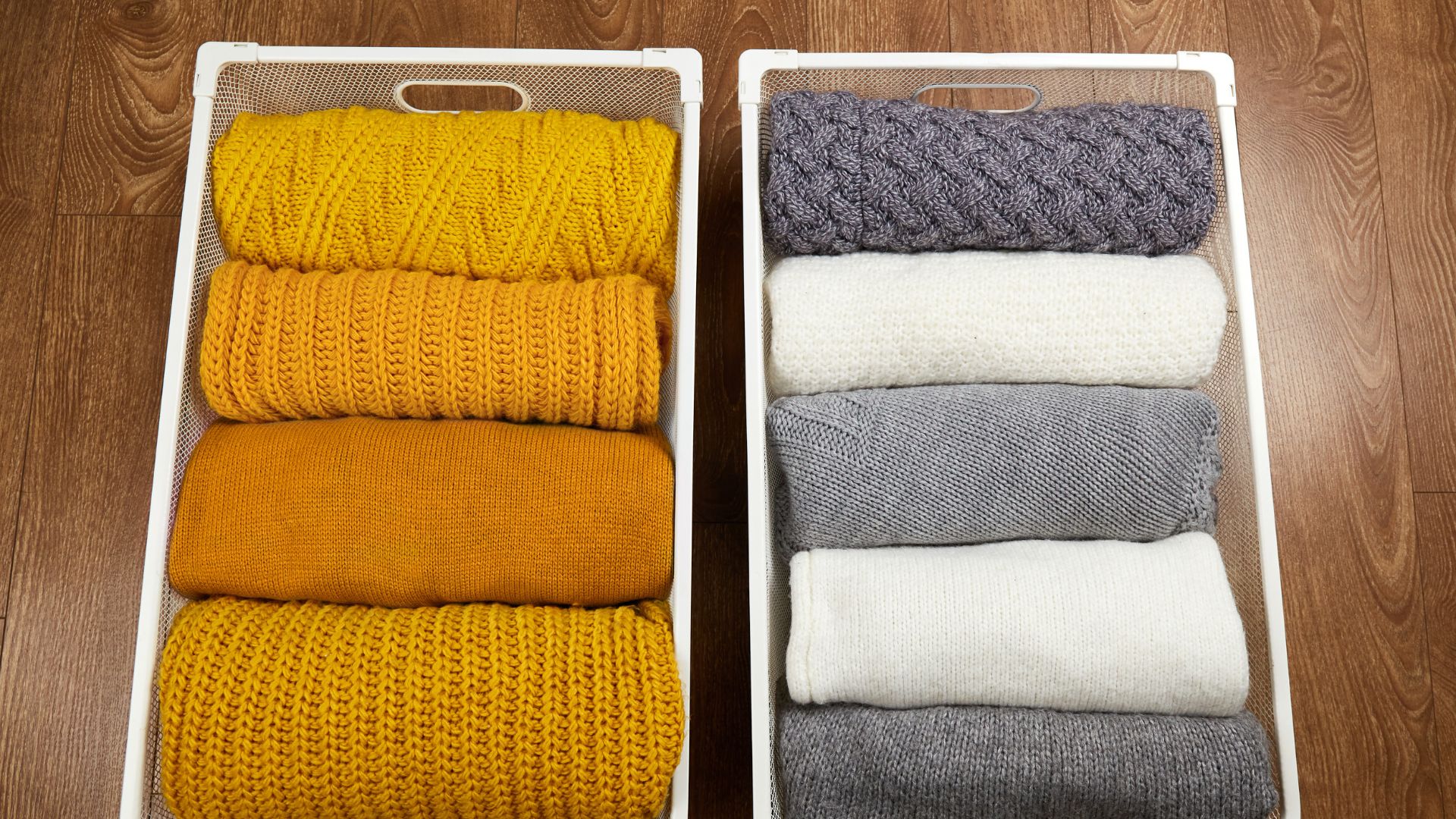
Shelves are perfect for organising your jumpers where you can see them, but there's a knack to stacking them right. Stack them too high and they might topple over, plus fishing out that jumper at the bottom can be tricky.
Heather suggests one way around this is to store your jumpers in boxes, which can easily slide in and out of shelves, keeping everything neat and accessible.
She says: I'd containerise them rather than having them open on the shelf as they can slip so easily - using boxes like Skubb boxes from Ikea - so you can just pull out the container on the shelf that you want.”
“Larger boxes are great to store heavier, chunkier knits that can't fit in drawers easily,” she says. “They’re also good if you struggle to put laundry away in a timely manner.”
RRP: £39.99 | These stackable organisers keep your jumpers exactly where they should be – on the shelf, not falling onto your head! Plus, with their open-front design, you can easily spot the knit you're looking for.
RRP: £14.99 | Another option is to match your storage boxes to your decor. This zigzag design turns your jumper storage into a decorative feature – perfect if you're keeping your knits on display.
RRP: £12.50 | Recommended by organisational expert Heather, these boxes will allow you to keep your jumpers nice and neat on shelves. They come in a variety of different sizes, and these ones also come with a zip so you can protect your woolies from dust.
4. Hang them up
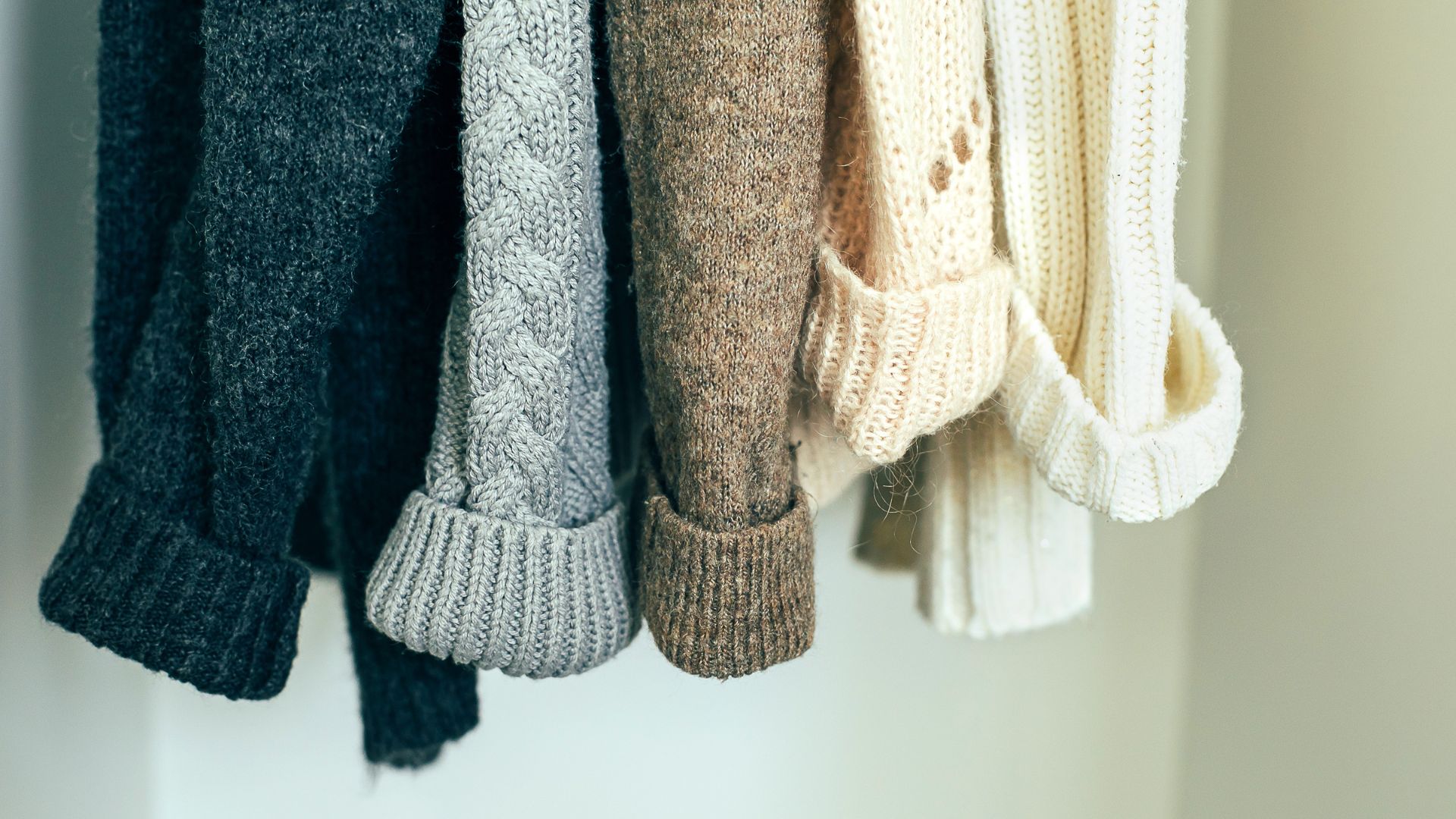
Not all of us have the shelf or drawer space to store knitwear, especially if they’re bulky, but Heather says hanging them is not the best way to store jumpers as it can leave them out of shape.
"I much prefer folding than hanging as I think its better for the fabric and also for space," she says.
So what should you do if hanging your knitwear is the only option?
“I'd use velvet hangers to keep them in place and reduce drag on the shoulders," says Heather.
She also recommends the drape and fold method when hanging, using tissue paper in between the folds if it's a delicate sweater. It evenly distributes the weight of the sweater, preventing strain on the shoulders and keeping its shape intact. Here's how it's done:
- Fold: Lay your jumper flat on a surface and fold it in half lengthwise, with the sleeves together.
- Position: Place the hanger hook pointing towards the neck opening, with the bottom bar of the hanger aligned with the armpit area of the folded sweater.
- Drape: Drape the body of the sweater over one arm of the hanger.
- Fold: Fold the sleeves over the other arm of the hanger.
Are there any jumpers that shouldn't be hung? Heather says avoid anything too delicate or chunky.
"I wouldnt hang delicate knits or anything with a sequin if they're stored in a busy wardrobe as that can cause them to pull," she says. "I wouldn't hang heavy knits either as the weight of them can cause issues with stretching, plus put added pressure on your clothes rail!"
RRP: £22.99 | Velvet hangers are a must for Heather as they help stop the jumpers slipping. Unlike plastic or wire hangers, these gentle grippers keep your knitwear securely in place without leaving marks.
RRP: £25.99 | To keep your jumpers, especially those made from delicate materials, Heather suggests using a mini dehumidifier in your wardrobe. "This will help to trap moisture and protect your jumpers," she says.
RRP: £4.89 | When choosing tissue paper for storing your sweaters, whether lining drawers or using it for the drape and fold method, opt for acid-free and chlorine-free options. This ensures your delicate knitwear remains protected and damage-free.
5. How to store cashmere
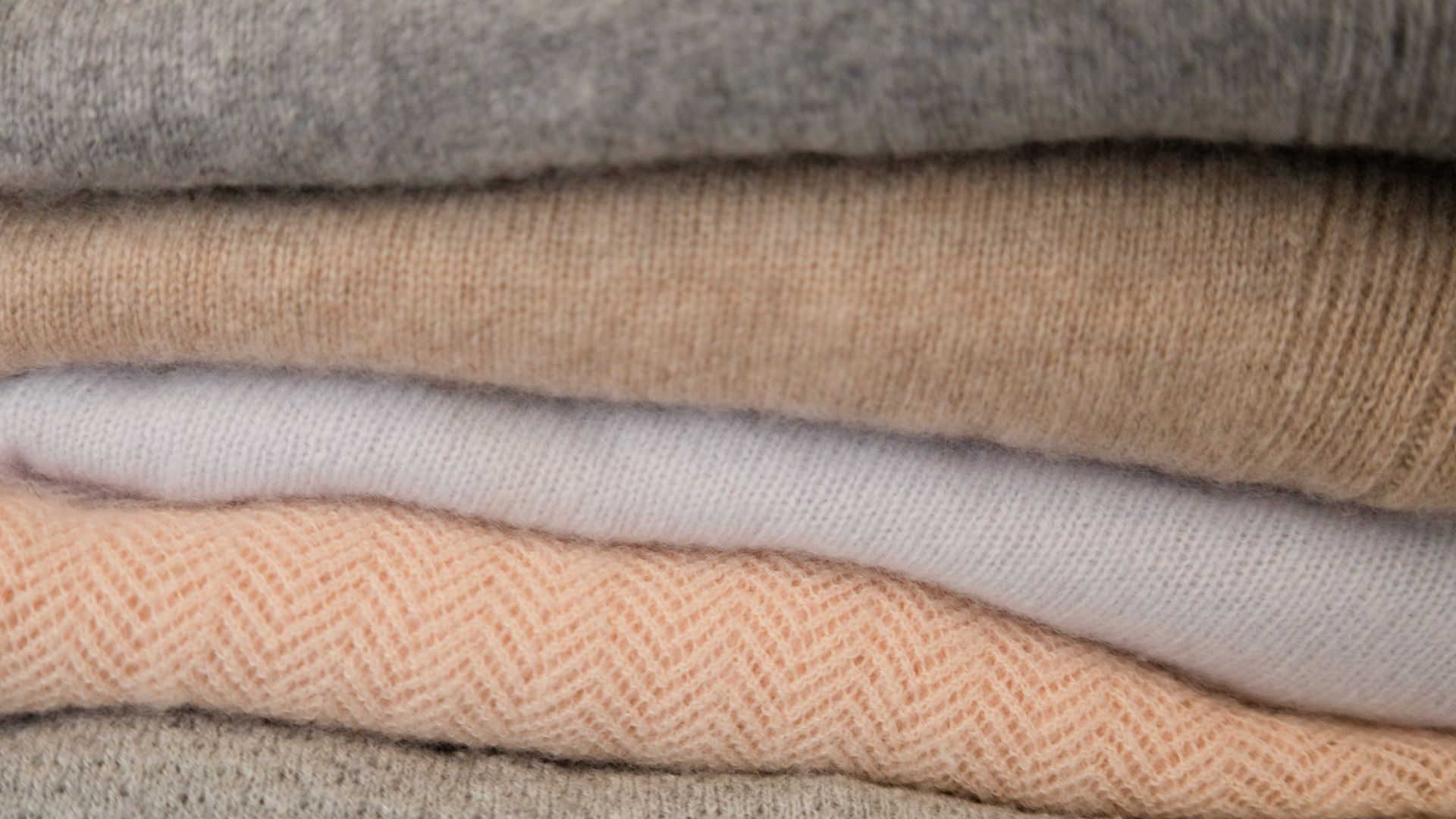
Jumpers such as cashmere need extra special treatment when it comes to the best way to store them.
Rachael Wood, co-founder of luxury cashmere brand, Chinti & Parker says before you can even think about storing your cashmere, you need to make sure you're looking after it properly.
“Storing your jumpers correctly starts with laundry,” she says.
“Food and drink debris can attract moths and insects, even when the clothes aren’t visibly stained. If you’re not sure how to wash a cashmere jumper, always follow the washing and drying instructions exactly, then iron - if necessary - and fold carefully before putting away.”
Rachel says if you want your cashmere jumpers to last the distance, then they must be folded and not hung. And Heather says, whatever you do, never vacuum pack your cashmere.
“Don't put cashmere in any vacuum packaging, as this can damage the fibres,” she says.
RRP: £22 | Give your cashmere and wool the care they deserve with this gentle pH neutral wash. Not only does it clean and soften your precious knits, but its blend of cedarwood and orange oil naturally helps keep moths at bay.
RRP: £17.95 | These cotton pouches are perfect for storing your cashmere between seasons. The breathable fabric keeps your knits fresh, while the cedar zip and block provide natural moth protection.
RRP: £8 | Nobody likes those little fabric bobbles (aka pilling) that appear on well-loved jumpers. This clever comb makes quick work of removing them – perfect for giving your knits a refresh before tucking them away for storage.
How to protect jumpers from moths

As well as knowing the best way to store jumpers made from fine fabrics such as cashmere and merino wool, it’s also essential to ensure pesky moths can’t get to them.
Moths like jumpers made from natural fibres that contain keratin, a protein that moth larvae feed on to grow into full-sized moths. Synthetic fibres, such as polyester and nylon, do not contain keratin, so moths are not attracted to them.
In addition to keratin, moths are also attracted to the dark, undisturbed places where cashmere and wool garments are often stored, such as closets and drawers. This makes it easy for them to lay their eggs on the garments, and for the larvae to hatch and feed without being disturbed.
Rachael says one of the easiest ways to protect your expensive jumpers is with natural defences.
“Lavender sachets and cedar stars are your best defence against moths and their destructive appetite for cashmere,” she says.
“If you use lavender sachets, ensure these don’t come into direct contact with your cashmere garments as they can stain the fabric. You’ll need to replace these products each season as their smell - and therefore their efficacy - will fade.”
And don’t worry if you’ve seen some moths flying near your favourite jumper, Rachael says there is a way to save them – you just need to head to your kitchen!
“Seal the affected item in a plastic bag and place in the freezer,” she says. “Leave for 48 hours, then allow the piece to return to room temperature before laundering and drying as normal.”
RRP: £6.99 | These lavender sachets can be slipped into knitwear drawers or onto shelves to help keep moths at bay and away from cashmere sweaters. We also love that they indicate when they need changing too.
RRP: £14.99 | Want a natural way to protect your hanging knitwear from moths? Pop some cedar rings onto your hangers. Moths can't stand the scent, making it perfect for protecting your precious cashmere. Just remember to give the rings a quick sand now and then with the sandpaper provided – this refreshes the scent and keeps those moths at bay.
RRP: £11.99 | For storing your winter woollens during off-season, Heather recommends using these breathable bags. "They are great for long term storage," she says. They offer protection from moths and dust, ensuring your jumpers look fresh and new when you're ready to wear them again.
What is the best way to organise jumpers?

Now you know the best way to store jumpers, let's make sure you're getting the most from your knitwear collection.
Sorting your jumpers by either colour or thickness makes it much easier to find exactly what you're looking for. Plus, it adds a lovely sense of order to your drawers, with a beautiful rainbow of colours or a satisfying gradient of knits from lightweight to chunky!
To make the most of your collection, try rotating your jumpers regularly. Simply switch up which ones sit at the front of your drawers – this way, you won't automatically reach for the same favourites while others sit forgotten at the back.
When it comes to curating your knitwear collection, Rachael encourages choosing timeless pieces over on-trend ones. Her approach to decluttering is simple: ask yourself if each jumper truly brings you joy.
"Try to avoid holding onto pieces that you don't truly love or that you're only holding onto for sentimental reasons," she advises.
"You're unlikely to wear a piece that you don't love - even the cosiest of sweaters - so consider donating or selling for someone else to enjoy."
For seasonal organisation, Heather has some practical advice:
"Separate heavy knits form light knits for ease of storage after the winter season and to make finding the right outfit quicker," she advises.
Our experts:







